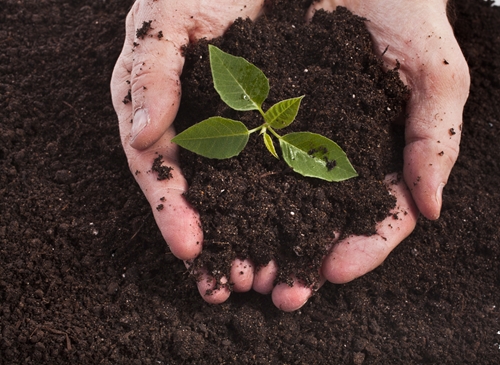
Making your own compost is a great way to save money on gardening supplies. It's also a more sustainable means of living, as table scraps are basically used to grow your gardens and make your dream home even more idyllic.
Prospective homeowners interested in green house plans may want to consider composting as part of an overall strategy to live sustainably. However, anyone can make their own compost pile, no matter the design of their home or the square footage of their land.
Making the pile
Despite what many people think, composting is incredibly easy. To do it, all people need do is toss organic piles in a container and give it a little bit of oxygen and water. You don't even need an enclosure. The only major tasks involved are sorting out your scraps to add to the pile and checking on the pile to see that it hasn't dried out or become too wet.
To start, HGTV recommended choosing a pile spot that gets a few hours of sun a day, is situated away from tree roots, which suck out nutrients from the compost, and is conveniently located. Grass should be dug up and removed or turned over as a base for the pile. After that, you can start adding organic material to the pile. The ideal size for the pile will be roughly 3 feet square at the base and 3 feet high, guaranteeing that the pile will cook while still getting oxygen.
As the pile grows, you will want to water it lightly but regularly so that is has the consistency of a damp sponge, according to Better Homes and Gardens. If the pile is too dry it won't decompose and if its too wet it will rot and begin to smell. You should also turn the pile once a week with a garden fork so that it gets plenty of oxygen.
Choosing materials
There are many different approaches to choosing and sorting potential compost materials. Some people will throw anything that's organic into the pile, while others are highly selective. Fruit and vegetable scraps, eggshells, coffee grounds and garden clippings are some of the more common materials that go into a pile. However, that list is far from inclusive, as TLC demonstrated with a list of 75 items that can be composted. Tea bags, stale bread, moldy cheese, preserves, paper cupcake cups, toilet paper, dryer lint and even cotton clothing ripped into pieces are all good materials for the pile.
Incorporating into your home
While it is possible to create a compost pile without an enclosure, many homeowners may feel that the look of an organic heap is probably not the most appealing backyard decoration. Fortunately, though, compost piles can easily be dressed up with a chicken wire enclosure or even a stout wooden fence. The design can even reflect the home, with a more wooden feel for traditional homes or wire for contemporary constructions. Given the needed size of the compost pile, it won't take up much space in even the smallest of lots.
The larger concern for homeowners, however, may be the hassle of sorting out scraps. All this requires is a small, separate bin next to your trash can where leftover food items can go. Even in an efficient kitchen such as this one, all that is needed is a designated cabinet for a small container. Because compost piles don't smell when done properly, you can even situate the pile conveniently next to that house's backyard deck. When the bin gets full, homeowners only have to take a few steps to empty it out.